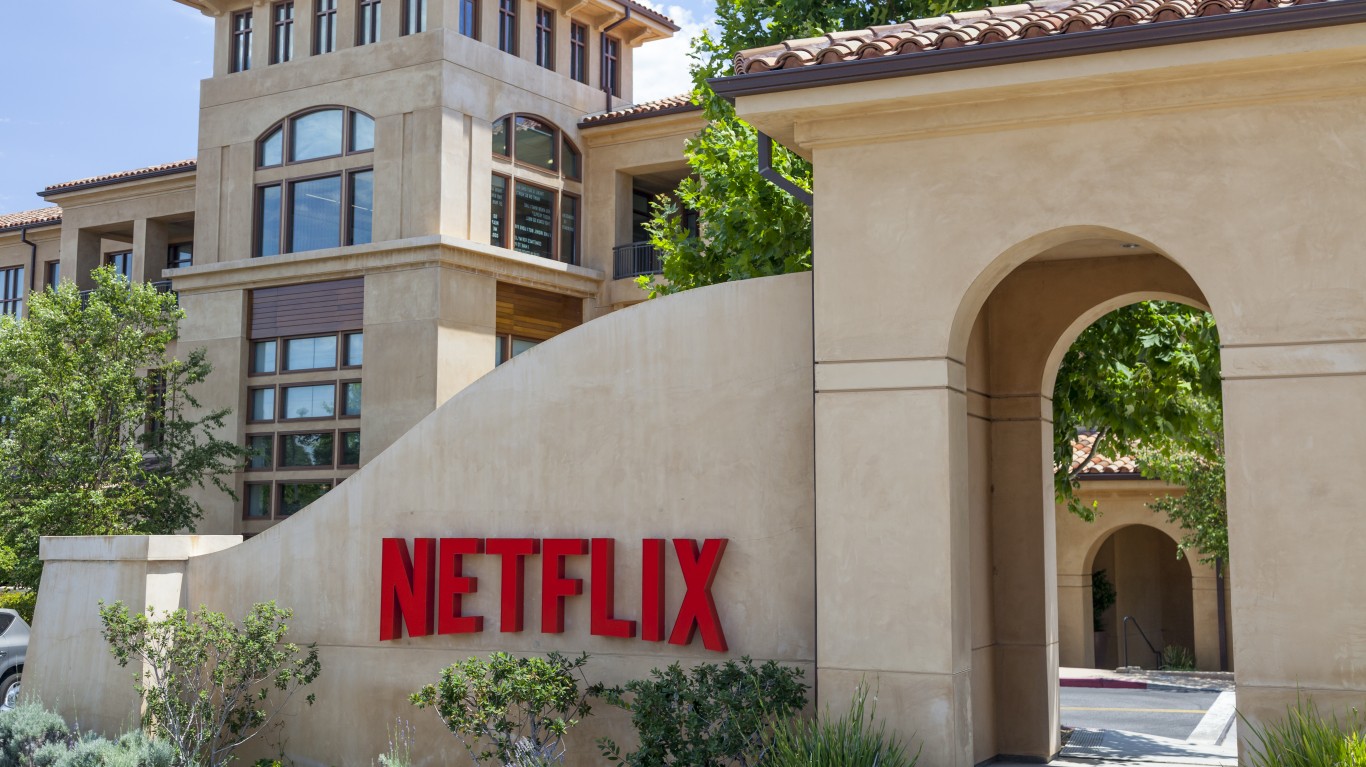Investing
Morning Blast: Investors Cool to Netflix and Tesla, Taiwan Semi Results

Published:

Netflix Inc. (NASDAQ: NFLX) stock traded down more than 6% in Thursday’s premarket following Wednesday’s second-quarter earnings report. Since the company first came public in 2002, analysts and investors have zeroed in on subscriber growth as the most important metric, if not the only one that mattered.
The company added 5.9 million new subscribers in the second quarter—and the share price is dropping. Wall Street was looking for net new subscribers of around 2 million. So why are the shares sinking?
[in-text-ad]
Well, the goalposts have moved. Now, it is all about content. With every movie studio and TV production company now pouring money into streaming video, Netflix is only as good as its last movie or TV series. From the shareholder letter:
Our biggest traditional entertainment competitors, Disney, Comcast/NBCU, Paramount Global and Warner Brothers Discovery — with their large content libraries and creative expertise — are now focused on profit so they can build sustainable, long term streaming businesses. And our big tech competitors Apple, Amazon and YouTube — with their broad reach and deep pockets — continue to invest heavily to grow their streaming revenues. Netflix’s revenue was $32B in 2022, compared to nearly $40B for YouTube across all its products10 (trailing 12-month basis as of Q1’23) and Amazon’s $35B subscription revenue in 2022, of which we assume the majority relates to the Prime bundle11 that includes shipping, video and other services. Combined with Apple’s video initiatives, there’s quite a competitive battle happening.
The company also noted in its letter that its primary measures of success are revenue, which indicates growth, and operating margin, the indicator of profitability. Revenue rose 2.7% year over year in the quarter, a far cry from 8.6% year-over-year growth in the second quarter of 2022. Netflix forecast revenue growth of 7.5% ($8.52 billion) for the current quarter.
Operating margin for the second quarter came in at 22.3% and is forecast to remain nearly flat at 22.2% in the third quarter.
Netflix’s story is that despite competition from everyone with a camera (and that is literally everyone, not just Disney, Paramount and Warner Bros.), the company is more than competitive on the content front and on its ability to keep up with Apple, Amazon and YouTube. Analysts are skeptical, so a solid quarter with a forecast for another is not enough.
An alternative explanation may be that investors who have seen the stock price rise by nearly 140% over the past year are satisfied to take some profit now and jump back in once the price drops.
Tesla Inc. (NASDAQ: TSLA) has a similar yet more complicated story. Vehicle deliveries were up, sales rose in the company’s other businesses and lower manufacturing costs per vehicle were all positives. On the negative side, the average selling price per vehicle fell year over year, and that reduced profitability. Revenue rose by 47% year over year, gross margin fell by 6.8%, and operating margin fell by nearly five percentage points to 9.6%. That is profit.
In the first quarter, Ford lost more than $60,000 on every EV it sold and said it expects to wipe out that loss by the end of 2024. Tesla’s adjusted net income for the second quarter totaled $3.1 billion; in the first quarter, Ford reported a profit of $1.8 billion. Tesla’s margins fell, as predicted, but the margin on every vehicle it sells is still about 10%.
Many analysts expect production of the Cybertruck to boost sales of all Tesla vehicles beginning later this year and ramping up further in 2024. Discussions about licensing the company’s full self-driving (FSD) to another automaker are another positive.
Tesla’s stock traded down as much as 4% after Wednesday’s report and conference call.
Looking ahead, TSMC forecast third-quarter revenue in line with a Wall Street estimate of $17.5 billion. But that was at the high end of the company’s forecast range. The company expects demand for its 3-nanometer chips to drive revenue and profit in the quarter. TSMC forecast a third-quarter operating margin of 38% to 40%, lower than the second quarter’s 42% margin.
TSMC’s stock traded down by around 3% in Thursday’s premarket session.
The average American spends $17,274 on debit cards a year, and it’s a HUGE mistake. First, debit cards don’t have the same fraud protections as credit cards. Once your money is gone, it’s gone. But more importantly you can actually get something back from this spending every time you swipe.
Issuers are handing out wild bonuses right now. With some you can earn up to 5% back on every purchase. That’s like getting a 5% discount on everything you buy!
Our top pick is kind of hard to imagine. Not only does it pay up to 5% back, it also includes a $200 cash back reward in the first six months, a 0% intro APR, and…. $0 annual fee. It’s quite literally free money for any one that uses a card regularly. Click here to learn more!
Flywheel Publishing has partnered with CardRatings to provide coverage of credit card products. Flywheel Publishing and CardRatings may receive a commission from card issuers.
Thank you for reading! Have some feedback for us?
Contact the 24/7 Wall St. editorial team.